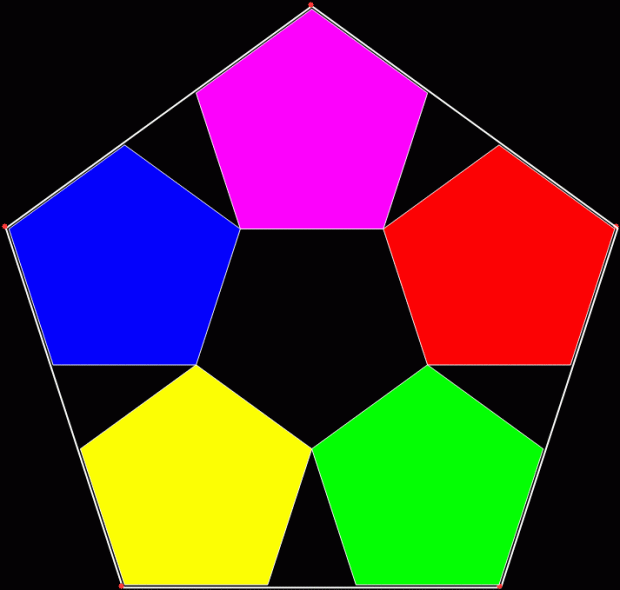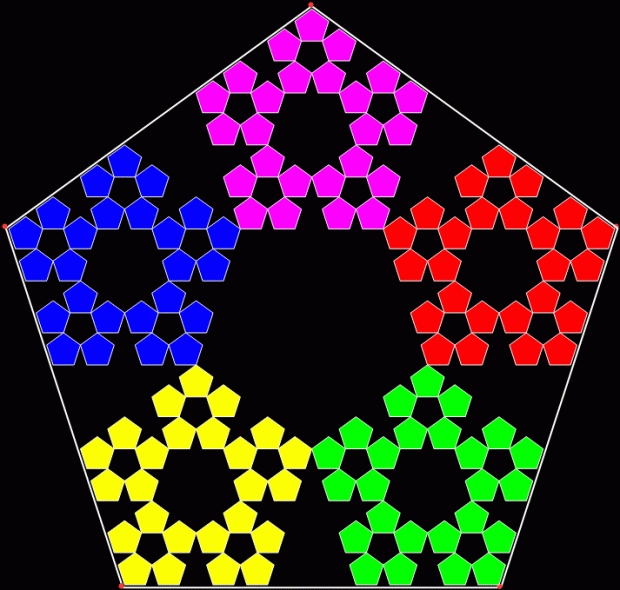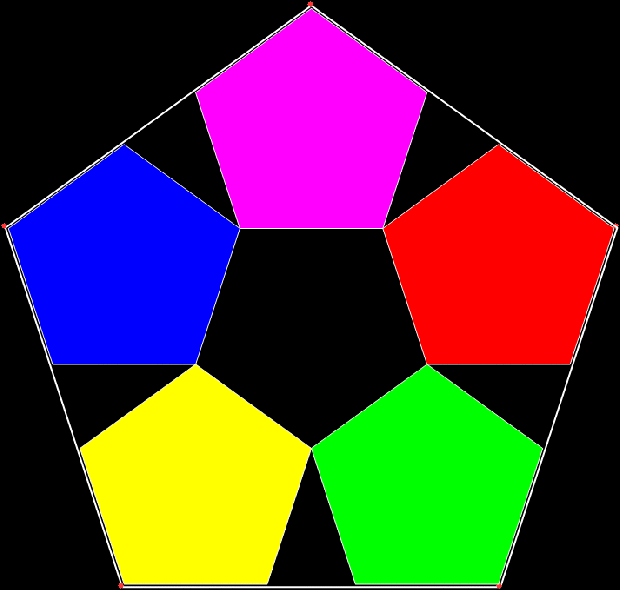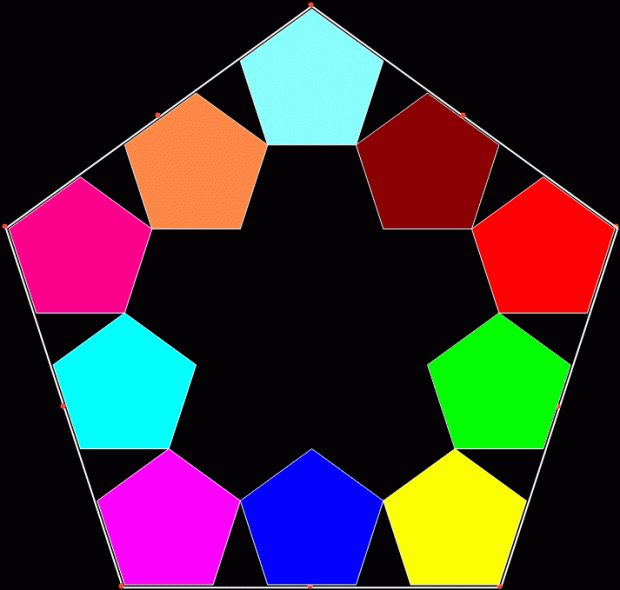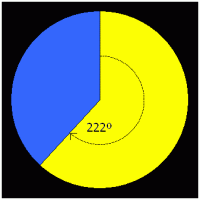Pre-previously in my passionate portrayal of polygonic performativity, I showed how a single point jumping randomly (or quasi-randomly) towards the vertices of a polygon can create elaborate fractals. For example, if the point jumps 1/φth (= 0.6180339887…) of the way towards the vertices of a pentagon, it creates this fractal:
Point jumping 1/φth of the way to a randomly (or quasi-randomly) chosen vertex of a pentagon
But as you might expect, there are different routes to the same fractal. Suppose you take a pentagon and select a single vertex. Now, measure the distance to each vertex, v(1,i=1..5), of the original pentagon (including the selected vertex) and reduce it by 1/φ to find the position of a new vertex, v(2,i=1..5). If you do this for each vertex of the original pentagon, then to each vertex of the new pentagons, and so on, in the end you create the same fractal as the jumping point does:
Shrink pentagons by 1/φ, stage #1
Stage #2
Stage #3
Stage #4
Stage #5
Stage #6
Shrink by 1/φ (animated) (click for larger if blurred)
And here is the route to a centre-filled variant of the fractal:

Central pentagon, stage #1
Stage #2
Stage #3
Stage #4
Stage #5
Stage #6
Central pentagon (animated) (click for larger if blurred)
Using this shrink-the-polygon method, you can reach the same fractals by a third route. This time, use vertex v(1,i) of the original polygon as the centre of the new polygon with its vertices v(2,i=1..5). Creation of the fractal looks like this:

Pentagons over vertices, shrink by 1/φ, stage #1 (no pentagons over vertices)
Stage #2
Stage #3
Stage #4
Stage #4
Stage #5
Stage #7
Pentagons over vertices (animated) (click for larger if blurred)
And here is a third way of creating the centre-filled pentagonal fractal:
Pentagons over vertices and central pentagon, stage #1
Stage #2
Stage #3
Stage #4
Stage #5
Stage #6
Stage #7
Pentagons over vertices with central pentagon (animated) (click for larger if blurred)
And here is a fractal created when there are three pentagons to a side and the pentagons are shrunk by 1/φ^2 = 0.3819660112…:
Pentagon at vertex + pentagon at mid-point of side, shrink by 1/φ^2
Final stage
Pentagon at vertex + pentagon at mid-point of side (animated) (click for larger if blurred)
Pentagon at vertex + pentagon at mid-point of side + central pentagon, shrink by 1/φ^2 and c. 0.5, stage #1
Stage #2
Stage #3
Stage #4
Stage #5
Pentagon at vertex + mid-point + center (animated) (click for larger if blurred)
Previously pre-posted:
• Performativizing the Polygonic #2
• Performativizing the Polygonic #1


